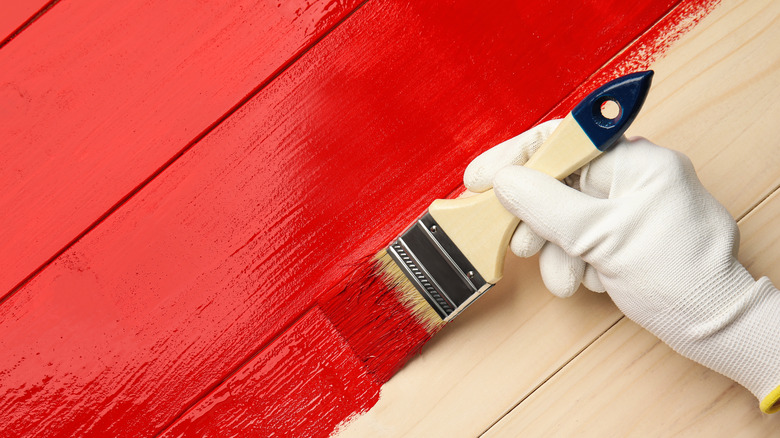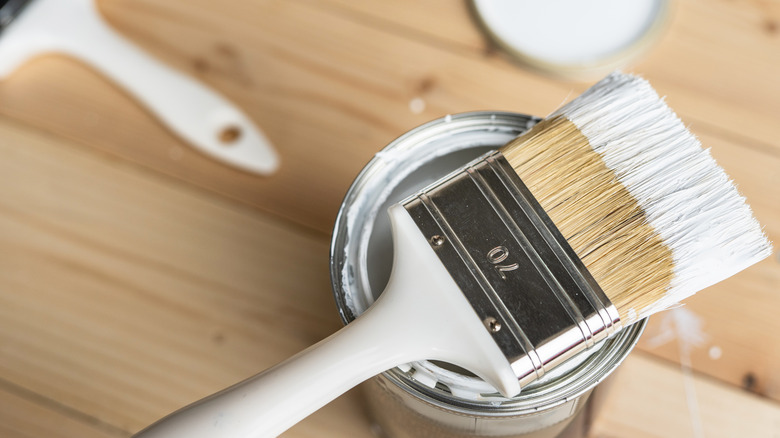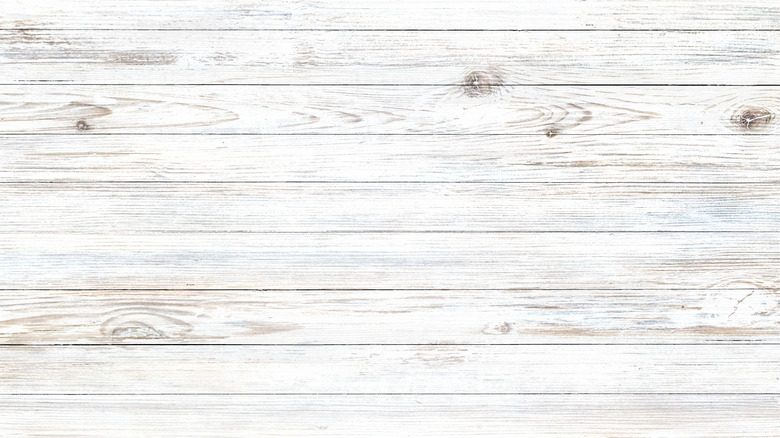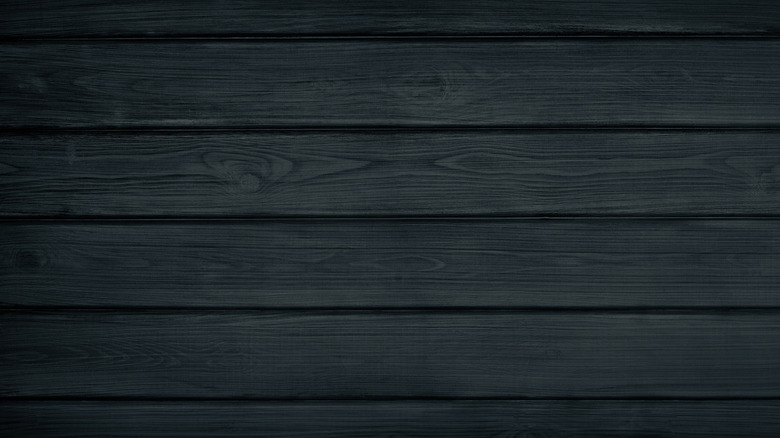The Best Way To Paint Wood Paneling, According To An Expert
Wood paneling is often found in the homes of design-conscious homeowners. Heartwood Carving notes that this natural building material can bring you closer to the environment around you while imbuing your home with a unique sense of calm and comfort. The use of wood paneling often looks fantastic, as well, and this certainly doesn't hurt!
Even so, there's often a need to stain or paint your wooden features on a routine basis. This addition adds a depth of style and color to paneling, and can help protect the integrity of the building material for years to come. But painting isn't always the easiest task that a homeowner must perform.
Fortunately, in an exclusive interview with House Digest, Matt Kunz — the president of Five Star Painting, a Neighborly company — offers his insight into proper procedures. "People choose to paint over paneling because its often a simple and economical way to get a fresh new look," Kunz says. "As long as the paneling is in good condition, and with the proper preparation, you can paint over it."
Choose and apply your primer
Any type of painting that you may do around the home will typically require a primer layer first, and that includes painting wood paneling. It will add longevity and color depth to the finished product. "When selecting a primer, choose a high-quality, strain-blocking option for solid wood paneling and an oil-based primer for veneer," Kunz explains. "You'll want to confirm on the label how much time to wait before applying a second thin coat. Two coats of a high-quality latex primer tends to complete the project."
Primer also helps to seal porous surfaces that may be hiding beneath the finished coat of paint and acts as an adhesion additive. "When applying, use a brush to cut in the corners, along the ceiling and baseboards, and use a foam roller to apply a thin coat to the rest of the paneling," Kunz continues. That way your wood paneling will be set up for painting success.
Putting on the paint
Once the primer is dry, you can move on to the painting phase. Kunz notes that you won't need a specialty product that may be hard to find for this job, but has some suggestions about the varieties that will yield the best results. "When choosing paint for the panel, we would recommend a similar type that you might choose for painting cabinets, such as Emerald Enamel, but in a flat finish, rolled on," he shares. "Latex wall paint would also do the job, but keep in mind it will not be as durable. So, you should consider what kind of environment the paneling will be in."
Kunz also notes that the procedure for this task is similar to the techniques he suggests for priming. "Apply the paint of your choosing, opting for two thin coats," he continues. "Begin by cutting in the corners, ceiling, and baseboards, and be sure to remove any paint that gathers in the gaps between the panels or in the panel grooves using a dry brush. Allow the paint to dry in between coats." Keeping your pressure consistent and striving for an even coating with each pass will also make the finished product all the more spectacular and eye-catching. And of course, taking your time is always the best course of action.
A word on solid wood paneling
Lastly, there are some caveats to keep in mind when tackling solid wood panels; Kunz notes that you'll want to take special care to ensure the integrity of such material. "When painting solid wood paneling fabricated from individual V-groove or tongue-in-groove boards, do not put filler in the gaps in the boards," he cautions. "The weather causes the paneling to contract and expand, which cause the filler to fall out. Simply, wash, sand, and prime the paneling before painting."
As well, depending on the type of wood your panels are made of, you may want to take additional steps to protect the grain and structural integrity of the material. "Solid wood paneling fabricated from knotty pine needs a stain-blocking primer or a primer with a shellac or oil base, which keeps the resin in the wood from bleeding through the topcoat," Kunz adds. "It is strongly suggested when going from a brown-toned paneling to a white color, caulk the cracks and seams prior to priming with a high-quality acrylic latex caulk in white. Otherwise, you will see these seams which will now be visible."



